Mark Sisson's Blog, page 303
April 16, 2014
4 Foods That Have Surprising Medicinal Benefits
 “Let food be thy medicine,” said some old Roman guy, I think. Whoever he was, he was right. Food is the foundation for preventive medicine. It’s the first thing we examine when figuring out a health issue, and successful changes to what we eat usually have the most profound effect on our health. If we don’t eat well, we won’t be healthy – simple as that.
“Let food be thy medicine,” said some old Roman guy, I think. Whoever he was, he was right. Food is the foundation for preventive medicine. It’s the first thing we examine when figuring out a health issue, and successful changes to what we eat usually have the most profound effect on our health. If we don’t eat well, we won’t be healthy – simple as that.
But what if food literally was medicine? What if certain foods had specific, established pharmacological effects that rivaled certain pharmaceuticals?
Some foods do all that, and I’m going to talk about a few of them today. This isn’t an exhaustive list, of course. That would require an entire book. Nor is this medical advice. Rather, it’s me relaying interesting information about some foods with novel properties and benefits. If you have a serious medical condition, don’t drop your medicine in favor of pharmacological foods. Just be aware of these next time you hit the market.
Lion’s Mane Mushroom
In Asian cuisine, the dense meaty flesh and subtle lobster-esque taste of the Lion’s Mane makes it a popular replacement for animal protein. That’s well and good, but what about those of us for whom the best animal protein substitute is more animal protein? Any reason to seek the Lion’s Mane?
Yes. This insane-looking fungus contains unique compounds that stimulate the biosynthesis of nerve growth factors (NGFs), whose degeneration during the aging process is thought to contribute toward neurodegeneration and cognitive impairment. According to several studies, these NGFs and other compounds in the mushroom may be able to promote neurogenesis (growth of neurons), hasten recovery from nerve damage, and improve cognition in people suffering from cognitive decline (and maybe even in healthy people):
Reverse mild cognitive decline in the elderly (for as long as they continue to take the mushroom).
Help nerve-damaged rats regenerate destroyed nerves and regain their ability to walk.
Improve the Functional Index Measure in patients with dementia.
Reduce anxiety and depression in women.
Lion’s Mane is also a popular nootropic – a supplement designed to improve brain health and function – among people apparently free of cognitive decline. There’s no published research in support of this function, but it’s plausible.
Lion’s Mane supplements exist, but they’re best absorbed with food. Probably because they are food. Fresh Lion’s Mane is apparently delicious sautéed in butter and deglazed with white wine. Dried Lion’s Mane – which you can find in most Asian markets in the jawdroppingly expansive dried mushroom section – can be soaked in water until saturated or tossed dry into soups and stews. You could even treat the dried mushrooms like a supplement and mix them into smoothies.
Bitter Melon
If you ever go to a legit Asian supermarket, you’re bound to see a bin full of long, green, ribbed cylindrical vegetables that look like rejected cucumbers. Old ladies will pour over the pile for the best specimens and every spry looking senior in the joint will have one or two in their cart. What are these mysterious objects? These are the bitter melons, a staple anti-diabetic food in traditional Chinese and Ayurvedic medicine. Even African hunter-gatherers frequently use wild bitter melon (not that they have a diabetes issue, but perhaps their bitter melon habits help explain it).
Does it actually work as an anti-diabetic agent? Yes, according to several lines of evidence.
Four compounds with AMPK-stimulating activity have been isolated from bitter melon. AMPK regulates fuel metabolism, and diabetics need ample AMPK activity because it helps move glucose from the bloodstream to the muscles. Exercise is another potent stimulator of AMPK (and effective counter to diabetes).
A recent study compared bitter melon to metformin, the popular and effective diabetes drug. While it wasn’t as effective at reducing fructosamine and blood glucose as metformin, its effects were significant in type 2 diabetics.
Diabetic rodents saw the stirrings of beta-cell regeneration following long-term consumption of bitter melon powder. Liver function was also improved.
Bitter melon is extremely promising. If you don’t have diabetes, you can still benefit from the improved insulin sensitivity and AMPK release. Plus, bitter melon is excellent in a stir-fry. It’s a vegetable, not a drug.
Dark Chocolate
I’ve gushed over high-cacao dark chocolate many times before, but I’m going to do it some more. Why? You already love it. Heck, you’ve probably got cocoa flavanols in the crannies of your fingerprints and a cocoa butter sheen on your lips as we speak. Don’t lie. Don’t be ashamed. I have the same problem.
So, why more chocolate talk? It’s a substance with effective medicinal qualities that also happens to be a tasty form of candy:
Dark chocolate improves blood pressure. In fact, dark chocolate actually acts as an ACE-inhibitor in its own right, similarly to pharmaceutical ACE inhibitors but more modestly (a 2-3 point reduction, both systolic and diastolic) and without side effects. Unlike other ACE inhibitors, cocoa also improves vascular function via another mechanism: increased nitric oxide availability. Targeting nitric oxide, which dark chocolate does, may be effective against drug-resistant hypertension.
Dark chocolate improves blood flow (reduced arterial stiffness, increased vasodilation, that sort of thing) in many different populations: diabetics, smokers, the healthy young, the healthy old, overweight people, postmenopausal women, and people with elevated risk factors for heart disease. The increase in nitric oxide availability likely mediates much of this effect.
The improved vascular function may have effects on the brain, too. Cocoa flavanols increase blood flow to the brains of healthy young people during a cognitive task, without improving performance. In elderly patients with mild cognitive decline, high doses of cocoa flavanols improved brain function, blood pressure, and insulin sensitivity. A similar group using lower doses saw no benefits to cognitive function, although they did get improvements in overall mood. Cocoa is most effective in people who need it – people with cognitive decline – and higher dosages are more effective than lower dosages.
Furthermore, the cocoa butter part of dark chocolate is an extremely stable fat with hepatoprotective effects, particularly when alcohol is consumed. Rats on a cocoa-butter diet could consume 27.5% of calories as alcohol without incurring liver damage. The cocoa phenols are also protective against alcohol-induced liver injury, so it’s (as always) the total package that works best.
Better blood flow equals better arterial function equals less hypertension equals better thinking and fewer senior moments. Red wine goes well with dark chocolate which protects the liver against the alcohol in the wine. It’s all quite elegant. And delicious.
Red Meat
Really, red meat? Not Shetland sheep liver, moose thyroid, or cow brain? Just plain old red meat?
Those are all great, powerful foods, but standard red meat (of any ruminant) is quite medicinal and, more importantly, highly available and widely palatable. There’s just something invigorating about eating red meat, especially after a workout or a period of abstinence.
Beyond the protein, iron, zinc, B-vitamins, and other well-known nutrients, red meat is the best source of carnosine, a nutrient with a host of brain benefits. It improves cognition among schizophrenic patients, reduces glycation, protects against cataracts, and scavenges reactive oxygen species and mitigates the toxicity of malondialdehyde, methylglyoxal, hydroxynonenal, and acetaldehyde. Vegetarians have the least amount of carnosine in their muscles. Beta alanine supplements, which increase the amount of carnosine in the muscles, increase the total amount of work an athlete can do.
Or maybe it’s the creatine, which doesn’t only come in tubs of white powder. Red meat is perhaps the most potent natural source of the brain – and muscle-boosting nutrient.
This all adds up to red meat being an extremely important medicinal food, especially for the people at the greatest risk of cognitive and physical decline. Sure enough, elderly women who ate a diet high in red meat experienced the largest gains in cognitive functioning and muscle strength, and vegetarians – but not omnivores – who supplemented with creatine improved their scores of brain function.
Many other foods offer many other benefits that complement red meat, but I argue that red meat is almost irreplaceable. It’s hard to say that about any other single food. Hate kale? You can get by okay eating spinach, chard, and broccoli. Ruminants are special. We’ve enjoyed a long and fruitful relationship for hundreds of thousands, perhaps millions, of years. Even if you’re only eating it sparingly, we could all benefit from at least a modicum of ruminant flesh in our lives.
These are just four examples – two commonplace, two a bit more exotic – that showcase the power of food to heal as well as sustain us. As I said earlier, there are many more. There are likely many foods with as-yet undiscovered medicinal effects. You’ve probably eaten several today. The best part about this “food as medicine” thing? You don’t have to know the ins and outs of everything to get the benefits. You don’t have to read the studies or get a prescription or worry about drug interactions. You just have to eat it.
What about you guys? What are your favorite medicinal foods?
Thanks for reading, folks.
Order The Primal Blueprint Starter Kit and Take Control of Your Health Today!




April 15, 2014
The Essence of PrimalCon: Celebrate Primal Life with Your Tribe in 2014
It’s hard to describe in words how amazing the PrimalCon Vacation Tulum was, which is why we brought out master cinematographer Janèe Meadows down there to capture the magic on video! I urge you to take 75 seconds out of your day and watch this highlights show. It captures the essence of what I’ve been trying to create for the last seven years on Mark’s Daily Apple – a spirit of community and making new connections, a sense of adventure into the natural world, an appreciation of excellent cuisine, and a commitment to healthy, primal living. We have a beautiful PrimalCon Vacation Tulum summary page built with an amazing slideshow. You can also check out our Primal Blueprint Podcasts: In Episode 10 we recorded Darryl Edwards’s Tulum presentation on Play. In Episode 11 I recapped the Tulum event. And in Episode 13 we recorded Brad Kearns’s Tulum presentation on developing a peak performance attitude and mindset.
We have built some great momentum with PrimalCon after seven events and four years, and will continue our production of awesome live gatherings while we keep nurturing this amazing virtual community gathering place. We are respectful of the need to meet varying programming needs and budget concerns, so you’ll see us continue to evolve and expand the PrimalCon experience in the future.
I was able to spend some time in Tulum chatting with guests from around the world about what inspired them to come and how they made it work. For the nearly two dozen Aussie guests, it was quite a grueling trek. I didn’t even know 18 hour flights existed until Josh and Jack from Thr1ve told me about their Sydney-Dallas non-stop excursion! That’s a trek all right, but I don’t think it tops Derek and Barbara Wood’s epic 21-hour drive from Prince Albert, Saskatchewan to PrimalCon Lake Tahoe last year…They actually apologized for leaving a bit early from the final lunch to get on the road…). Their flight straight down the globe to Tulum was a cinch by comparison. Yep, we have a nice core group of attendees who show up over and over again, including the amazing duo Chris Adams and Tina Leaman, who have ascended to the role of official PrimalCon chaperones, basically making sure everyone has an awesome time. They share the 7 for 7 PrimalCon attendance record with Angelo dela Cruz (oh, and me…).
I know it’s easy to stay in your comfort zone, enjoy your Daily Apple at home (or office, shhh!), mind your budget and go about the business of your daily routine. But once in a while, we deserve to shake things up with new adventures and challenges. A friend I lunched with recently mentioned that “rich” people “invest” in travel, food, leisure pursuits, and personal care. She wasn’t talking about mutual funds and she wasn’t talking about material wealth. She meant people who have their priorities straight make things happen to enrich their lives on a daily basis.
That’s my segue into encouraging you to join us at the upcoming PrimalCon events: our first-ever PrimalCon New York, June 5th-8th, 2014 at the Mohonk Mountain House, or our fifth annual PrimalCon Oxnard on September 25th-28th, 2014 at the Mandalay Beach Resort.
Quite a few PrimalCon guests are booking extra days on either side of the formal 3-day agenda to make a more leisurely-paced vacation. A local just told me about an awesome hike near Mohonk to a waterfall and a 20 foot jumping rock! I’m fixing to arrive early and check that out! The agenda and presenter lineup at Mohonk is looking great, with water sports on their private lake, an amazing group scavenger hunt competition, a leisurely hike to the majestic Sky Top Tower, or a more difficult rock scramble course to the same destination. Luke Shanahan just confirmed he’ll deliver his amazingly popular and powerful writer’s workshop that he debuted in Tulum, with more additions to the presenter lineup likely.
Regarding Oxnard, I am really pleased with our late-September time slot because we usually experience the most consistent weather of the year then on the SoCal coast. We have so much history in Oxnard that you can peruse 12 video links at the bottom of the Oxnard page and really go deep into what you can expect at this amazing ocean side beach park where we set up camp next door to the Mandalay Beach Resort where you’ll stay.
Seasoned PrimalCon enthusiasts will notice we try to strike a balance between bringing back our favorite presenters time after time and also giving some popular new folks a chance. I’m excited to introduce Katy Bowman, MS to PrimalCon for the first time in Oxnard (Her Restorative Exercise Institute is located in nearby Ventura, CA). Katy is gaining worldwide acclaim for her expertise in body alignment and movement mechanics and we are currently working together on a multimedia project to help you optimize your workplace environment. Hint: it’s not as simple as just jumping on the standup desk bandwagon, and we’ll give you the comprehensive instruction to optimize your day and minimize your discomfort.
If you have any questions about PrimalCon, please call (888-774-6259), email, or even try our new live chat (found at the bottom right of any page on PrimalBlueprint.com) so our staff can give you more details and assurance that this event will be just what you need to reinvigorate your interest in living a healthy, fit, primal lifestyle. I hope to see you in person in the near future!
Meet Your Tribe at PrimalCon New York or PrimalCon Oxnard in 2014!




April 14, 2014
Dear Mark: Vegetable Powders, Pro/Prebiotic Timing, RS Questions, and Routine Eating
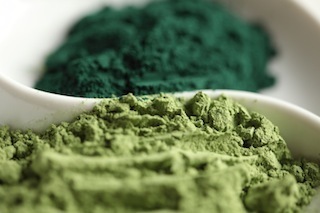 For today’s edition of Dear Mark, we’ve got four questions and four answers. First, I explain the merits and drawbacks of vegetable powders in the event of low produce availability. Next, I discuss whether there’s a perfect time to take your probiotics and prebiotics, or whether it doesn’t matter at all. After that, I answer a quick barrage of resistant starch-related questions, followed by a query regarding a monotonous eating regimen that by all accounts appears to be working very well. Is there a hidden danger in eating similar meals all the time?
For today’s edition of Dear Mark, we’ve got four questions and four answers. First, I explain the merits and drawbacks of vegetable powders in the event of low produce availability. Next, I discuss whether there’s a perfect time to take your probiotics and prebiotics, or whether it doesn’t matter at all. After that, I answer a quick barrage of resistant starch-related questions, followed by a query regarding a monotonous eating regimen that by all accounts appears to be working very well. Is there a hidden danger in eating similar meals all the time?
Let’s go:
I’ve searched the site, but I didn’t see anything regarding vegetable powders. I work offshore, and the supply of fresh vegetables can be slim. Is there a vegetable powder that you would recommend taking? Are there negative side effects to taking these?
Thanks,
John F.
Vegetable powders are a serviceable hold over for situations where fresh produce is scarce.
There is some nutrient loss during dehydration, usually among the vitamins. Minerals and polyphenols are fairly stable, the latter less so if high heat is used (since they’re often there to protect the plant from oxidative insults, like heat). But even slightly-degraded vegetable-based micronutrition is superior to none of it.
They do help people who need the extra dose of micronutrients, though:
A powdered fruit, vegetable, and berry juice mix (this one) lowered oxidative and inflammatory markers in obese women when paired with exercise.
In heavy smokers, fruit/vegetable juice powder lowered some markers of oxidative stress.
Similar dehydrated juice powders improved markers of cardiovascular health in another group of smokers; powders that included berries were most effective.
Obese people and heavy smokers tend to be under a lot of oxidative stress, so they have a greater need for plant micronutrients, particularly the phytonutrients which often act as antioxidants that counter the stress (or boost our own antioxidant defenses). You’re neither obese nor a heavy smoker (to my knowledge), but you are deprived of plant nutrients.
There are dozens of options out there. I don’t know enough about individual products to elevate any single product over the others. Sure, there may be some proprietary methods that “preserve the maximum antioxidant capacity,” but I suspect they’re all pretty good, as most of the ones I’ve seen use relatively low heat to dehydrate the veggies.
I’ve heard good things about the Amazing Grass line of powders. They include herbs, probiotics, and prebiotics along with the fruits and vegetables.
This looks cool, too: vegetable powders that you buy individually and mix yourself. Want a couple ounces of dried beets? You got it! How about leek flakes? They can do that.
I can’t think of any negative side effects, beyond a false sense of security. When a company claims that a single scoop of their product equals 10 servings of vegetables, but a quick review of the nutrition facts fails to show vitamin, fiber, and mineral levels that even approach 10 servings’ worth, the claim is false and you shouldn’t assume that you’ve just eaten an entire head of broccoli (or whatever vegetable is advertised). These powders are a holdover (when you can’t get any real stuff) or a supplement (when you want to add more to your regular diet). They aren’t magic.
Definitely consider vegetable powders if that’s your only option.
Hello Mark,
Looked everywhere and can’t find it. Can you tell me the proper timing to take probiotics and prebiotics supplements?
Craig
Certain prebiotics, like resistant starch, can serve as a vehicle for probiotics. The latter catch a ride on the former, pass through your stomach and small intestine without being digested, and make down into the colon – where you want them to go. It’s a neat little probiotic delivery mechanism, so if you do supplement with RS, you’ll want to take probiotics with it.
For anything else, I don’t think it matters what hour of the day you take them. Historically, prebiotics would have come in the form of food, which humans have evolved to eat throughout the day. Historically, probiotics were either consumed in the form of fermented (sometimes unwittingly fermented) foods, food with a few milligrams of soil-based organisms (dirt) along for the ride, dirt under our fingernails, or water with resident microorganisms. In other words, I find it unlikely that we’ve adapted to take pro/prebiotics at any particular time of day.
Thank you for the very informative resistant starch articles. I am very interested in this, as I cannot tolerate prebiotics due to FODMAP issues. However, I have a few questions please. What about konjac as a source of RS? I have seen a product called Slendier Organic Konjac Spaghetti in Ocado in the UK. This is pre-cooked, so how would that affect things with regards to the RS? I understand that parboiled rice has RS, but what about after it has been cooked? Do we have to then cool it? What about cooked & cooled tapioca pearls for RS? Is tapioca flour the same as tapioca starch? Sorry about all the questions & thank you for all your help & information.
Christine
Don’t apologize for the questions. It’s what I’m here for!
Konjac is not a source of resistant starch, actually. It’s mostly glucomannan, a prebiotic soluble fiber that can encourage the growth of butyrate-producing gut bacteria in human subjects on a low fiber diet. So in that respect, it’s similar to resistant starch. It can also favorably affect some blood markers, like total cholesterol, LDL, triglycerides, and fasting blood glucose. Pre-cooking it does not affect the prebiotic fiber content.
Parboiled rice forms resistant starch during the initial parboiling process. By the time it arrives in your pantry, it already contains RS. That doesn’t change during cooking. However, cooling cooked parboiled rice will increase the RS content and repeated cycles of cooking and cooling will further increase the RS content (PDF). Unfortunately, not into perpetuity (although that would be cool if counter to the known laws of physics).
Tapioca pearls contain very little resistant starch. A 100 gram portion contains 44 grams of starch, 40 grams of which are fully digestible (PDF). Not a good source.
Tapioca flour and starch are interchangeable as far as I can tell. Tapioca starch/flour is a good source of RS according to some research, but the reports from users tell a murkier story. Some get the vivid dreams, improved blood glucose, and better bathroom visits normally attributed to RS, while others report elevated blood glucose, indicating that they are successfully digesting the starch contained in tapioca starch. If you try tapioca, it would be a good idea to measure your blood glucose before and an hour after to see if you get a big spike (which indicates successful digestion).
Mark,
First I want to thank you for all of your expertise, well written articles, and delicious supplements. You have been an extremely valuable resource for me as I go on this journey. I recommend you to everyone who asks me about my lifestyle.
On to my question; I have been eating Primally for about 3 years, starting my senior year in college. Back then I ate whatever I could get my hands on that was within the guidelines of primal eating. Now that my life is more regimented I have a very established routine. My supplements are dialed in. Certain dishes “work” for me, meaning that they meet my macro- and micro- nutrient needs. The 2-3 dishes I make are convenient to carry to work and eat on short notice. My workouts are going great. My overall health continues to improve.
Am I exposing myself to any risk by not changing up the meals/supplements I eat regularly? I am always eating the same kind of protein, veggies, roughage, and starches. I take the same supplements week after week. Long-term, could I start seeing diminishing returns from my routine, or even health risks?
Sincerely,
Allan
I’m of the opinion that short term health is a fair barometer for long term health. Generally, if a way of eating is helping your performance in the gym, improving your overall health, and providing all the macronutrients and micronutrients you need to live well, you’re in good shape for the future. There are exceptions, like ridiculous “cleanses” that make you feel euphoric and high where you lose a ton of weight right away but end up destroying your metabolism, eating away at your lean mass, experiencing massive rebound gains, and ruining your relationship with food in the long run.
There’s also the psychological aspect, which isn’t “just” in your head but can have real world physiological ramifications. Some people do really well on a regimen. They like structure. They thrive on sameness and order. If they were to jump around and switch up their meals on a constant basis, life would be too stressful and their health would suffer. It sounds like you’re one of those people. Others? Others dig chaos. They need something new every day. They thrive on novelty. A steady regimen would be disastrous for them and ruinous for their health.
It sounds like you’ve settled into the right groove. Stick with it. Ride it as long as you can.
There’s certainly evolutionary precedent for monotony. For long stretches of time, early human diets were routine. It was only as the seasons changed and different foods became available and unavailable that diets would shift. Even then, these shifts to new food sources would stay entrenched for weeks and months until the next shift.
The only food that it might make sense to “cycle” are fruits and vegetables, simply because they contain the nutrients that don’t show up in traditional nutrition databases. Vitamins? Minerals? We’ve had those quantified for decades. But we’re still learning about new phytonutrients and the ones we do know seem to have profound effects on a number of health markers, so it’s likely advantageous to eat a variety and hedge our bets. Antioxidant supplements also fall into this category. Treating them as hormetic stressors is probably better than taking them daily, especially if you’re a generally healthy person without any major health issues. That’s actually how I take my own high-antioxidant supplement blend – intermittently, rather than daily. Another way to put it: there’s nothing wrong with eating blueberries every day, but it’s probably better to eat blueberries, raspberries, blackberries, cherries, and strawberries.
If you start to see diminishing returns, it’s okay. You can always change things up. That’s the great thing about diminishing returns; rather than a hard endpoint from which there is no return, they’re simply a helpful signal to alter course. There’s no failure, just feedback, as Art De Vany says.
For what it’s worth, I’m closer to you. I’m an adventurous but opportunistic eater, meaning I enjoy trying new things when they’re in front of me, but at home I rarely feel the need to branch out far from my go-to meals. It seems to be working for me.
That’s it for today, folks. Thanks for reading!
Get the 7-Day Course on the Primal Blueprint Fundamentals for Lifelong Health Delivered to Your Inbox for FREE




April 13, 2014
Weekend Link Love
 Episode #14 of The Primal Blueprint Podcast is now live. It’s all about sleep: why it’s so important, how to get enough, how body composition depends on it, and much more.
Episode #14 of The Primal Blueprint Podcast is now live. It’s all about sleep: why it’s so important, how to get enough, how body composition depends on it, and much more.
Research of the Week
My good friend and the co-founder of the Ancestral Health Society, Aaron Blaisdell, has authored a paper suggesting that a high-carb, refined junk food diet can make you lazy and less motivated.
The composition of the human gut biome changes with the seasons.
Whenever indigenous people came into contact with colonizers, the groups that survived “suffered extensive mortality.”
Gamers have more thickness in the areas of the brain associated with working memory, planning, visual attention, and voluntary eye movement.
Interesting Blog Posts
Why open access science journals are leading us inevitably to the next Great Depression.
How “busy” are you, really?
Media, Schmedia
Rich in nitrogen, potassium, and phosphorus, pasteurized urine is an excellent fertilizer.
This is a fairly standard “vitamin D is important” media piece, but one factoid concerning sunlight and multiple sclerosis stood out: after Iranian “women were compelled by law to wear the veil outdoors together with clothing covering most of the body… the incidence of MS in Iran increased more than eight fold.”
Everything Else
Sweden tests the waters with a six-hour workday.
The president of Botswana has banned hunting nationwide in an attempt to curb poachers. For the hunting-and-gathering Bushmen of the Kalahari Desert, this means their livelihood is now illegal.
Consciousness may be a state of matter.
Recipe Corner
Splurge on some nice, big, juicy scallops, because the Meyer lemon pan sauce you make using the juice they give off is worth it alone.
Next time you’re making meatballs, why not throw in a kidney or two and make hidden kidney meatballs?
Time Capsule
One year ago (Apr 13 – Apr 19)
10 Psychological Hurdles Keeping You From Losing Weight (and How to Overcome Them) – If you’re not losing the weight like you want, perhaps it’s something other than the calories or the hormones.
How Small Wins Can Lead to Big Success – Start small. It’s often the only way.
Comment of the Week
Hi Mark,
I love what you do and this post; but you missed one…
SISSONS
Environment: Malibu, a coastal enclave community of Hollywood execs and retired professional athletes. 72 degrees and sunny year-round, but subject to occasional mudslide or brushfire.
What they eat: Grassfed beef & organs, line caught fish from the sea. Organic greens & produce from local farmers including some berries. Plenty of avocado, coconut & mac nuts. Occasional yam, rice (only with raw fish) and potato (in a pinch).
Numbers: 50% Fat, 30% protein, 20% carb. The species is generally regarded as the most healthy and fit on the planet, maintains optimal body mass with ease and has achieved balance of heart, soul, body and mind.
- Ha! Of course! How could I have skipped them?
Like This Blog Post? Dig Deeper with Primal Blueprint Books and Learn How You Can Reprogram Your Genes to Become Leaner, Stronger and Healthier




April 12, 2014
Salt Roasted Lamb
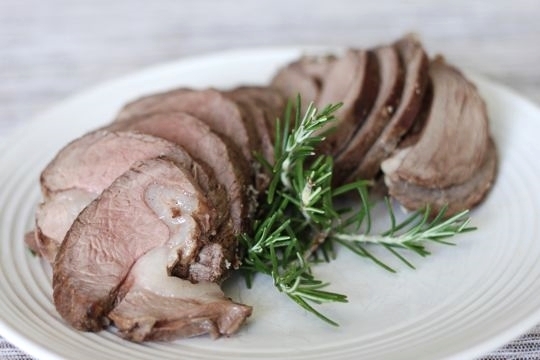 There are so many recipes for roasts that simply say, “season the meat with salt” before cooking. But exactly how much salt? Too little, and the meat is bland. Too much, and you’ve ruined a huge chunk of meat. But more often than not, home cooks are left on their own to figure out how much salt to sprinkle on top.
There are so many recipes for roasts that simply say, “season the meat with salt” before cooking. But exactly how much salt? Too little, and the meat is bland. Too much, and you’ve ruined a huge chunk of meat. But more often than not, home cooks are left on their own to figure out how much salt to sprinkle on top.
Salt roasting is a technique that takes off all the pressure of correctly seasoning meat before you cook it. It also helps keep meat tender and juicy, which is especially helpful when cooking meat that can dry out easily, like lamb. As long as you’re willing to go through a lot of salt to make it happen, you’re guaranteed a highly flavorful, juicy leg of lamb.
As the meat roasts beneath a hard shell of salt, all the juice gets trapped inside. The meat loses no flavor and is partially steamed while roasting, keeping it moist. This technique can be used with almost any large piece of protein: whole chickens, whole fish, pork loins and beef roasts.
Although egg whites make a harder shell, water can be used to dampen the salt instead. Add any herbs you like to the salt for more flavor. To know when the meat is done, use an instant read thermometer poked through the salt crust into the meat.
Salt roasting couldn’t be easier and the results are perfect every time.
Servings: 4 to 6
Time in the Kitchen: 1 hour
Ingredients:
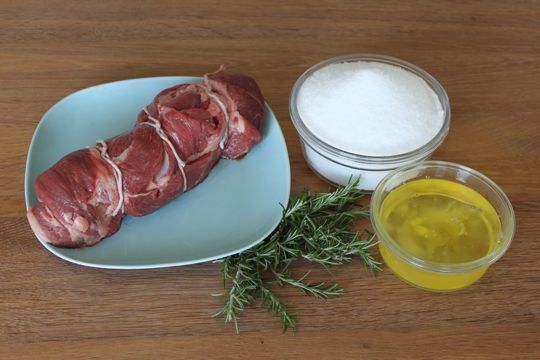
One 2 1/2 to 3-pound boneless leg of lamb, rolled and tied (1.1 to 1.4 kg)
3 tablespoons oil (45 ml)
5 cups kosher salt (about 700 g)
1/4 cup chopped rosemary (6 ml)
7 egg whites (or about 1 cup /240 ml of water)
Instructions:
In a large skillet over medium-high heat, heat the oil until it’s hot and shimmering. Add the lamb and cook until browned on all sides, turning occasionally, about 8 minutes total.
Transfer the lamb to a baking dish. Let it rest and cool slightly while the oven preheats and you mix the salt.
Preheat the oven to 375 °F/190 °C.
In a bowl, combine the kosher salt with the rosemary. Add the egg whites (or water) and mix really well with your hands until the salt is damp and thoroughly covered with egg white.
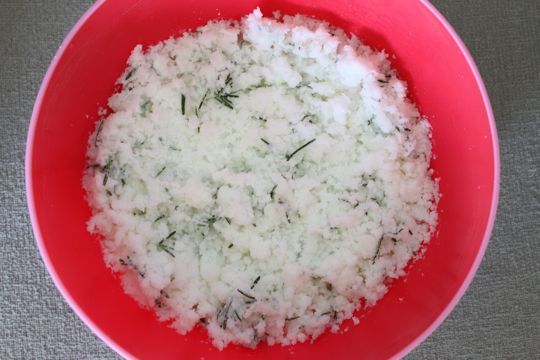
Pack the salt all over the lamb in the baking dish, leaving no cracks.
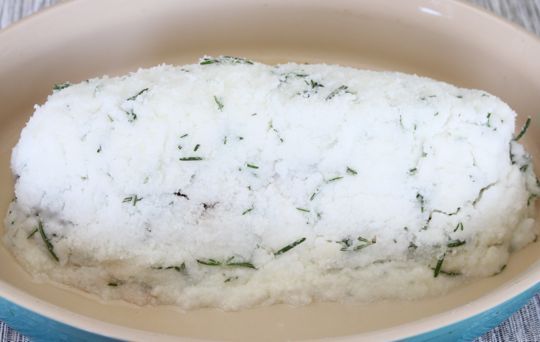
Roast in the oven for 30 to 40 minutes, until an instant-read thermometer poked through the crust and into the middle of the lamb reads around 130 °F (54 °C) for medium-rare.
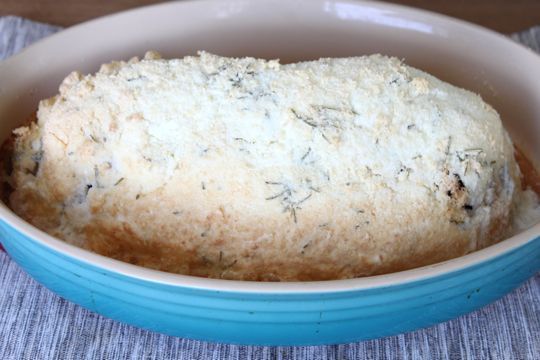
Take the roast out of the oven and let rest for 10 minutes, then crack the crust and remove it. Carefully and thoroughly brush off any visible salt from the outside of the meat.
Remove the string from the roast and slice thinly to serve.

Not Sure What to Eat? Get the Primal Blueprint Meal Plan for Shopping Lists and Recipes Delivered Directly to Your Inbox Each Week




April 11, 2014
Now a New and Greater Journey in My Life Can Begin
It’s Friday, everyone! And that means another Primal Blueprint Real Life Story from a Mark’s Daily Apple reader. If you have your own success story and would like to share it with me and the Mark’s Daily Apple community please contact me here. I’ll continue to publish these each Friday as long as they keep coming in. Thank you for reading!
 Hello, my name is Roar, I’m 27 years old and I’m from Norway. My story begins a bit early as I was diagnosed with atopic dermatitis1 when I was only 6 months old, but it was a minor issue throughout my childhood. Instead I have to jump forward a little to middle school.
Hello, my name is Roar, I’m 27 years old and I’m from Norway. My story begins a bit early as I was diagnosed with atopic dermatitis1 when I was only 6 months old, but it was a minor issue throughout my childhood. Instead I have to jump forward a little to middle school.
Middle School
I started middle school at the time when computers became more common for the average household in Norway. Our household got it even earlier, so I was a bit taken by it already, but it was taken to the extreme with newly made friendships at the school. My friends and I would gather as often as possible and create LAN parties2, where we would stay up all night during the weekends and eat mostly junk food and candy.
Physical activities were neglected (I was an active soccer player) and the general lifestyle of staying up late on the Internet became the norm. Usually I would end up sleeping for 4-5 hours a night, while on the weekends I hardly slept at all. During the second semester of the first school year I would start to get hives3 and really bad nosebleeds occasionally, this continued the next couple of years also.
The second year of middle school was the same, I had quit soccer practice and most of my time was spent in front of the computer. LAN parties had almost been taken to a new level were we would often compete about who could stay up the longest, my record was 75 hours. Then came the last year, the one before high school. The first months of the semester seemed to be going fine until October. I started getting stomach aches and they would get worse and worse to the point where I would wake up with them. I stopped going to school, I became lethargic and everything felt much more difficult than it previously was.
After several months, missing a lot of school, I was diagnosed with Crohns4. First they wanted to try a liquid solution that was injected through tubes in my nostrils, but that was so unpleasant so I opted instead for pills. I was given prednisone5 and got positive results in a very short time. This time around I had missed so much school that the teachers argued I had to re-take the school year, luckily I was able to catch up pretty quickly now that everything seemed fine.


High School
For a while it did seem fine. Sometimes I would get strange symptoms like getting out of breath after walking up stairs and I got that famous moon face, but other than that, I could live like I once did. The problems would then rise again as I started the first semester as a junior at high school. The doctors were adamant to change the medication given how positive I reacted to prednisone, the long term effects were clearly detrimental, and I was now given a different medication named pentasa. One brand would give me constipation, another was the total opposite, I was in a roller coaster where both the highs and lows were just bad. Due to the roller coaster ride, I was assigned to a different hospital. The doctors wanted to try an experimental treatment by the name remicade6. I tried it and the effects were pretty good. This treatment was administered the second semester of the school year, the previous instability had been such an issue that I had to focus on some classes while I stopped attending others. I finished half of my classes during the first year, having to re-take the others the next year. This was a huge blow. Ending primary school I was among the top of the class, during secondary school it started well but ended poorly, and now I could not even finish all of my classes. I was angry and felt stupid at the same time.
Next year, when I was going to re-take the classes, I had to move to follow my friends to another school. I didn’t know anyone that was in my class this time, and being one year older and still fighting with Crohn’s, I felt really insecure. A few months in, after a treatment, I had trouble sleeping one night. My back was itching tremendously and no matter how much I scratched it would not get better. It felt like I was going insane, I felt uncomfortable staying in the apartment and I left early to take the first bus home, this was my first panic attack7.
There were no signs of eczema except the intense need to scratch. Before the panic attack I had already started skipping school, and after I stopped attending it completely. The panic attack made me insecure in a different way than previously, instead of feeling dumb I felt out of control, I didn’t trust myself anymore. My second panic attack happened the day I was going to get the second injection of remicade. This time I just stayed in the apartment, not leaving it until the next day.
It became apparent that I was not functioning well enough for high school and I quit after the first semester. January next year I started as a temp in a local IT shop. There I stayed until the summer came and I had new plans, to attend a folk high school8 studying in China. The remicade treatment was still effective and the panic attacks had stopped after I left high school. I regained some of my confidence. Eczema had shown itself between the treatments, but it was so minor that the symptoms quickly faded away after each injection.
Folk High School
China and Eastern culture have always fascinated me, so when I got a chance to go there I took it. I moved southeast and into a dormitory along with my fellow students. There was a lot less academic pressure in this study, much more relaxed than general high school, which suited me well. Still, I had an issue trusting myself. My remicade injections were now administered at the nearest city and I would still go there every three months. However, the eczema really started showing itself. It broke out on knees, on the back, and it would itch randomly all over the place. Sleep became a big issue and since the itching didn’t really stop, I became very conscious about it in daily life.
Every injection would again reverse the eczema, but after each one it would get back pretty quickly. I also started getting panic attacks again. The first one in about a year would happen during a school trip where I made up an excuse and got off in Oslo. From there I went to stay with my brother for about a week. During the second semester my eczema broke out really bad and I was hospitalized for sun treatment9. After the two week treatment I came back to the school fully rejuvenated and ready for the last months. The treatment had not only helped to curtail the eczema, I was also in an exceptionally good mood as well!
During the treatment I had laid plans for the next year. A private IT academy was located in the same city I stayed in and I took some tests to prove my qualifications. I could even jump a few years. The academy had also a branch in the city where my girlfriend came from, so naturally I moved there.
The Academy
I moved west to the coastal city of Bergen10 to attend the academy. She lived with her family while I rented an apartment downtown which was within walking distance. The eczema was swinging between dry and moist, and I did not go to any sun treatments this time. I was set in my ways of attending school and a general social anxiety11 had begun taking root. Outside school I wasn’t really socially active, even when the eczema was minor it was really annoying. I became more and more self-conscious about it and it became an obsession.
Gradually throughout the school year it would get worse. My obsession grew bigger and I started shutting out people in my life, even my girlfriend. After I had finished the academy and had gotten my diploma, I eventually decided to move north again to take sun treatments. This time around the sun treatments would not last long as they did before. Contending with the health issues I decided to end the relationship.
England
Between sun treatments and getting sick again, I spent my time in front of the trusty ol’ computer. My friends were scattered all around attending universities or college, I was stuck at home being sick. It became worse and worse and my circadian rhythm was disrupted. Going to sleep was extremely difficult and I would stay up as late as possible to get as tired as possible to avoid itching.
Treatment after treatment I would get good results extremely fast, but they would fade as quickly as they came. Between these treatments I had entered a relationship with a girl from England (I was early on the online dating scene) and I would visit her right after the treatments. The climate in England was much better and the effects from the sun treatments would last longer.
I became very emotionally attached to her, so when she broke up I was heartbroken. Dealing with the eczema was bad enough, so I dealt with both by sleeping all the time. For almost ten days I did not eat, drank water, and I slept as much as I could. After the ten days some of the worst feelings had subsided, but I was still an emotional mess. The eczema had somehow improved and it wasn’t as annoying as previously, although it was still very bad.
Around Christmas I got a new job as service manager at a local IT shop (think Best Buy or Computer World) and I moved to the same town where I once tried to re-take my classes. Because of the eczema I had a big procedure every day before going to work. It consisted of waking up at least 2-3 hours before I had to go, take a hot shower and then let the warm skin cool down before I could apply any moisture creams. After applying the creams I had to let it get pulled in before wearing any clothes or they would be ruined, or worse the areas would be annoyed and itchy.
Stavanger
It didn’t take long for me to realize that I didn’t really like that job, so I applied for a different one in the southwest12 and got it. In my new job I was working shifts, which meant an increase of salary, allowing me to travel more. My wake up routine would still be the same, and I did not trust the health care system anymore, so I decided I had to figure this out on my own. Traveling became one of my hobbies and along with it the interest in photography.
Every time I traveled I would feel uplifted and much more relaxed, the eczema would get much better although not perfect by any means. I thought it was the climate as it would always get worse when I got home except for the summer or late spring. I enjoyed the new job I had, but I was not really that social outside of it, though for me at that time it was good enough.

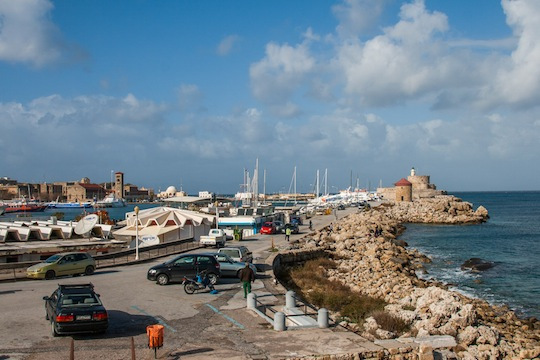
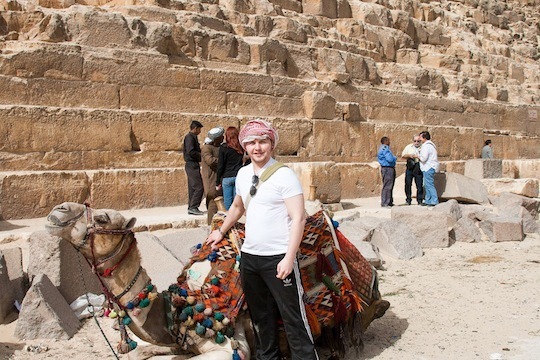


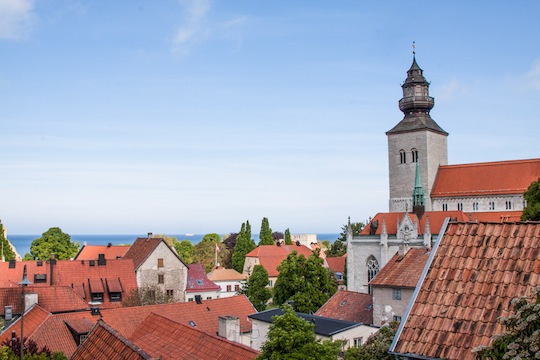
After 18 months I felt like I wasn’t making any improvements on my health. I had proven to myself that I could get a good job and earn a decent living, but looking to the future I could not settle with the current health problems. Something had to be done, so I quit my job and went for a three month trip to the USA.
Coming to America
The trip was fairly planned out as I was going all over the place, from Chicago to Denver, to San Francisco to Seattle, to New York and Florida and then back north. Although a lot was planned, I wasn’t entirely sure where to begin regarding health, so I decided to just leave that be and see what happened. Traveling while still having health issues did impact the journey somewhat, but it was always a bit better coping with it in a foreign country.
First I landed in Chicago and spent the night there, next morning I took the train going to Denver which lasted about 18 hours. I’d spend about a week there before heading over to San Francisco, I was attending the 20th anniversary of Photoshop. Arriving there in late February wasn’t exactly the warmest, though compared to Norway at the time it felt like late spring.
Between the Napa Valley vineyards and the Seattle coffee shops, I did not really spend much time focusing on health. That focus came on the end when I stayed in Daytona Beach, right after Photoshop World13 in Orlando. I had a few weeks left until I was going home again, my thoughts reflected upon the decisions to quit and spend my money coming here, was it all a waste?
My primary goal had not yet been fulfilled, the trip though, would in the end be a success. Before going back I visited some friends that told me about a diet that consisted basically of meat, fish and vegetables. They didn’t have a specific name for it, but they could easily have called it low-carb paleo. There was no specific information given about gluten nor grains, so I did not decide to convert completely and instead up my intake of vegetables and meat in general.
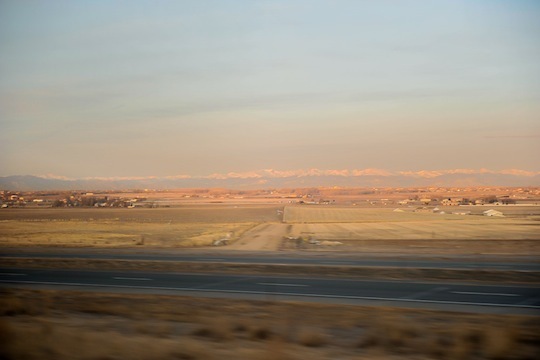


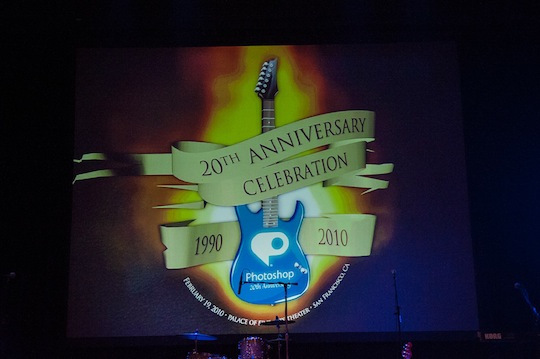


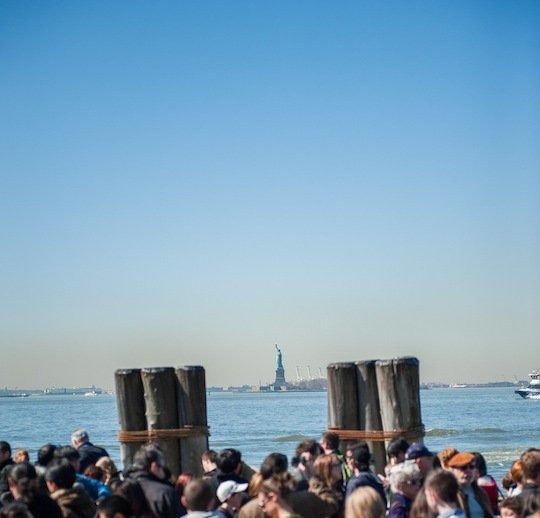
Back to Norway
I arrived in Norway early May, the time when it’s warm enough outside to be comfortable in a t-shirt (if you’re lucky). The next couple of months I changed my diet a little and began exercising. In short of just two months a tremendous change had happened. For a very long time, since I was about 18, I would wake up feeling awful with a strong need to take a shower to deal with the skin irritation. One early morning in July, I woke up feeling just refreshed and okay. No need to take a shower, no bad or annoying feelings in general, I was just fine.
I had exercised three times a week (full body routine on Mon, Wed, Fri) along with some cardio and walking in the mountains, each day gradually improving the skin. I would look okay after waking up, but I still felt a strong need to take that shower since it was still itching. This day, at 5AM, I just woke up and went to the gym. This instilled the confidence that I was certainly on the right track.
It was time to find a new job, and by coincidence, I got one in the same town southeast where I had previously quit the last one. The job was still in IT, but it was not the same shift work, working nights and weekends weren’t my cup of tea anymore. With my newly found improved health I became more obsessed about it and I finally read The Paleo Solution14 by Robb Wolf15 and decided to go gluten free. My exercise regimen also increased, I wanted to get bigger and stronger.
Social activities were still neglected as ever before. I felt I didn’t have the time for it and I knew how bad alcohol could affect me so parties weren’t really a solution. After a few months in the new job I realized once again that I didn’t like the job I had taken. Not liking the job I had together with my obsession of getting bigger and stronger, was a good recipe for depression. In the end I was so unhappy that I was looking for any opportunity I could find, which I found during my summer vacation in the north.
Moving back to old friends and family seemed like a good idea, so I went for it. This new job as IT manager and support became much more stressful than I had thought. The work place was more chaotic and hectic than I was used to, every day I would be really tired early evening, and no matter how I exercised there was no improvement. I became really angry at myself for putting myself in this position. Outside work I didn’t have any concentration to use my brain for reading or anything else. This work became my life and I didn’t enjoy the work.
Something had to be done, it was increasingly tearing me apart that I had gotten my health back, just so I could feel tired every day. Simply existing wasn’t an improvement from dealing with the eczema, both resulted in being angry and depressed. This led to me quitting the job which leads me to today.
Looking Back
It has been a couple of months since I left that job. The last two years, changing several jobs and the stress, made me realize that I should take a step back and get a broader view. That new view gave the understanding that I really didn’t know myself for all of those years. Besides travel and coming back to Norway, I never took any time to relax. From going to the academy to the last job, almost every decision I took was misguided. Be it a need to make up for lost time, or simply the hope of escaping to something better, the decisions were made on the wrong basis.
The last months, and especially the last three weeks, have been a journey of learning more about myself. I won’t say no to a trip to some foreign mystical country (travel is still a lot of fun) to find out who I am, but that has not been needed in this case. A lot of the information came from Mark’s books (The Primal Blueprint16 and The Primal Connection), which gave me a necessary insight about what inputs to give the body and mind. Much of the time I have had the “oh, this will surely make everything fantastic!” approach, where I ended up neglecting a lot of other areas in my life. Now I realize that there must be a balance.
Reading the books, especially The Primal Connection, gave me a lot of info to structure my life around. I’m the type who likes a framework to live by, and I have always had certain principles in my life, many of which I have not adhered to sufficiently. This would result in feeling bad about not eating good enough, or not being honest to myself, or knowing that I neglected friends and family. Yup, basically a giant briefcase of reasons I could open up and pick whatever I wanted to feel bad about.
That giant briefcase has been left behind, the worst is over, and I must look forward. This self-realization has made me more honest to myself and others, where I get more insight about who I am each day. The layers of the onion are slowly being peeled off, revealing more as each day goes by. Important things, like just understanding your own character, your own principles and what you stand for. Not only does it give you a greater confidence, but also makes you more relaxed since there is less doubt about which course of action to take. It’s building a framework to live within. Most people already have it, though I am willing to bet that people afflicted with health issues over several years will feel differently.
Throughout I have learned a lot about myself, many experiences about what did work and what did not. It taught me the importance of being diligent and honest, to take a good look in the mirror and realize what one has to do. Whether it is finally coming to terms that using butter with every meal doesn’t work or that I’m grumpy and easily a bit negative whenever my blood sugar is a bit low. It’s good to know that certain behaviors can be adjusted and improved upon. Food has of course shown itself to be extremely important, but getting sun exposure is easily another big part of the puzzle. A third is correct exercise and stress management. That again can be extrapolated to having sufficient time to eat and relax before going to work, or cutting down on certain activities or actually being more honest about what you feel to people. Or simply not drinking 15 cups of coffee no matter how much you love that freshly roasted java.
One last topic has been on my mind for a very long time, making a living. Previous jobs taught me a few things about what I really don’t want. The experiences also gave pointers on how I probably should live my life as well. Constant stress, for instance, creates a downward spiral and I easily become depressed, tired and overall sad. The chatter in my brain starts and a lot of negativity spirals out of control. Although my health is pretty good, I’m a bit sensitive to some types of stress and I must realize that this can either take a very long time to fix, or maybe it won’t be fixed at all.
I have gone through this in my head several times, I’m really nervous even typing this, but I’m gonna make my own podcast17. If I succeed, I will be able to support the lifestyle necessary for my well being. I’m scared, really scared, but I know it is the best option for me to help others and myself at the same time. It will most likely be in Norwegian and about health, self-improvement and lifestyle.
At last, I want to share a few insights about certain lifestyle changes I have made that have been very successful for me:
First, getting decent sleep and waking up properly is just really important. I got a wake-up light lamp18 that has made that part very easy, and every morning I either do a 40 minutes Qi Gong19 routine or a walk to wake up the body. If I skip this for some reason I have a strong tendency to have issues digesting the first meal of the day, it simply doesn’t sit well with me and my temper may suffer too.
If I go out for a drink (usually red wine or NorCal Margarita) I take a histamine pill to avoid any issues, and I always bring food to eat (grapes, nuts etc) as I usually get hungry. Eating a decent protein-laden meal will also be quite helpful, I never get hung over.
Chill out, don’t be so hard on yourself. If you are angry, realize that you are angry and do some deep breathing. When I catch myself being angry I sometimes put on certain music or listen to Alan Watts’ lectures20 on YouTube. Don’t give it more attention than necessary, don’t give in to the stress.
Be honest and open, challenge yourself and be a bit playful in daily life. If life is a game, then we must dance to the song that is being played. My determination for creating a podcast and hopefully making a living by doing so, has created a lot of challenges for me to go through. Everything from finding a format I am comfortable with, to challenging my own knowledge and setting up hardware and software. I have gone through entire days criticizing everything I do because I am a bit of a perfectionist, but as John Cleese talks about in a presentation about creativity21 (referring to the creative process, recommended!), you have to allow yourself to go through that to be creative. And the longer you spend on that process, the more original the solution will be. Sometimes it feels like I have no idea what I am doing, or how to go about things and it is just very uncomfortable and I really feel anxious. Each time I learn something more about myself, each time I improve and find a new piece to finish one of my internal puzzles, and in the end I am happy for doing so.
This drive has led me to talk candidly to strangers I meet when going to parties or other social situations, they reciprocate by telling their own stories and issues. Such responses have given me a greater confidence in the podcast, that there is an audience for it, that people care and want to know. Challenging myself to be more open, to dig deeper, shows me that I have yet to resolve certain things in my past that I will talk about in the podcast. Situations about being given a diagnosis, having issues with panic attacks and so on, is very helpful to talk about even if I don’t have the same problems now. If there is one major thing I have learned, it is that you have no idea how messed up you may be. A messy home may not bother you, but once it is cleaned and nice you feel very different and maybe even uplifted. The same goes for past experiences, it may be worthwhile to talk or write about it to get a certain perspective, or catch the essence of what happened.
The last item on the list is that supplements can not replace good habits or good nutrition. I take probiotic pills, my Vitamin D (regularly), Omega 3s, Quercitin and L-glutamine as my go-to protocol when I suspect accidental gluten consumption or anything of that kind. I have had no success supplementing my way into eating whatever I want all the time, it is not a viable long term strategy. If this means giving up that one piece of chocolate (even if it is 85% cocoa) with your daily coffee, or even your daily coffee, so be it. It is not worth the money, nor the effort and stress that goes along with it as you will always be slightly uncertain about what you can and can not eat. Once in a while is fine (except gluten of course) if you’re overall healthy, making a habit of it is not.
A big thanks to Mark Sisson for letting me share my story, the information from the books have been invaluable, giving me the necessary insight about how I function. I came from being stressed out with no particular insight about the future, to having learned so much about myself in record time. Now a new and greater journey in my life can begin.

If anyone wants to contact me regarding this article or the podcast, whether it is a friendly hello, sponsorship or specific questions, please send an email to article@engodkopp.net.
Roar Lochar
References:
Atopic Dermatitis: http://en.wikipedia.org/wiki/Atopic_dermatitis
LAN Parties: http://en.wikipedia.org/wiki/Computer_party
Hives: http://en.wikipedia.org/wiki/Hives
Crohn’s Disease: http://en.wikipedia.org/wiki/Crohn%27s_disease
Prednisone: http://en.wikipedia.org/wiki/Prednisone
Remicade: http://en.wikipedia.org/wiki/Remicade
Panic Attacks: http://en.wikipedia.org/wiki/Panic_attack
Folk High School: http://en.wikipedia.org/wiki/Folk_high_school
Sun Treatment: http://en.wikipedia.org/wiki/Atopic_dermatitis#UV_light_therapy
Bergen: http://en.wikipedia.org/wiki/Bergen
Social Anxiety: http://en.wikipedia.org/wiki/Social_anxiety
Stavanger: http://en.wikipedia.org/wiki/Stavanger
Photoshop World: http://en.wikipedia.org/wiki/National_Association_of_Photoshop_Professionals#Photoshop_World_Conference_and_Expo
The Paleo Solution: http://robbwolf.com/shop/products/the-paleo-solution-the-original-human-diet/
Robb Wolf: http://robbwolf.com
The Primal Blueprint: http://www.primalblueprint.com/product/The_Primal_Blueprint_Updated_and_Expanded_Paperback_Edition/Books_and_Media
Podcast: http://en.wikipedia.org/wiki/Podcast
Wake-up Light: http://www.amazon.co.uk/s/ref=nb_sb_noss?url=search-alias%3Daps&field-keywords=wake+up+light
Qi Gong: http://www.amazon.co.uk/Gong-Fire-Water-Matthew-Cohen/dp/B000TGL9XC/ref=sr_1_1?ie=UTF8&qid=1389792794&sr=8-1&keywords=matthew+cohen+qigong
Alan Watts’ Lectures: http://www.youtube.com/channel/UC848b72MStS_1twAV97p0yQ
John Cleese on Creativity: http://www.youtube.com/watch?v=AU5x1Ea7NjQ
Like This Blog Post? Dig Deeper with Primal Blueprint Books and Learn How You Can Reprogram Your Genes to Become Leaner, Stronger and Healthier




April 10, 2014
Yes, We’re All Susceptible to Food Advertising
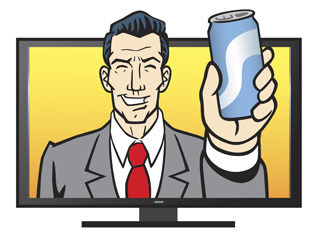 We in the Primal community often consider ourselves somewhat countercultural. (Okay, some of us maybe more than somewhat…) We eat what conventional wisdom says will kill us. We avoid or minimize our intake of whole food groups (mostly one really). In fact, we generally decline much of what the rest of society eats for its three square meals every day. Speaking of food frequency, we do strange fasting practices with no apparent religious intent. We’re just strange like that. Some of us work out at odd hole in the wall gyms with empty spaces instead of steppers and Nautilus machines. We go barefoot. We sit or sleep on the ground. We climb trees. And then there’s the caveman thing…. It’s enough to make ordinary folk shake their heads in abject consternation. With all of our, em, idiosyncratic choices, over time we can believe we’ve extricated ourselves from the cultural forces that would have us live otherwise. After all, it takes legitimate discipline to resist the expectations, routines and provisions that surround us every day. In the interest of said discipline, I think many of us insulate ourselves (or our kids) from at least some traditional marketing sources. Maybe it’s the sheer annoyance factor that initially motivates us. (Who hasn’t wanted to strangle the Trix rabbit?) Maybe it’s the desire to focus our kids’ early exposure on naturally occurring food that needs no cartoon mascot. Either way, I think we do ourselves a service. While we may be highly conscious consumers, we’re still highly human (and thereby susceptible) observers of marketing’s cunning messages.
We in the Primal community often consider ourselves somewhat countercultural. (Okay, some of us maybe more than somewhat…) We eat what conventional wisdom says will kill us. We avoid or minimize our intake of whole food groups (mostly one really). In fact, we generally decline much of what the rest of society eats for its three square meals every day. Speaking of food frequency, we do strange fasting practices with no apparent religious intent. We’re just strange like that. Some of us work out at odd hole in the wall gyms with empty spaces instead of steppers and Nautilus machines. We go barefoot. We sit or sleep on the ground. We climb trees. And then there’s the caveman thing…. It’s enough to make ordinary folk shake their heads in abject consternation. With all of our, em, idiosyncratic choices, over time we can believe we’ve extricated ourselves from the cultural forces that would have us live otherwise. After all, it takes legitimate discipline to resist the expectations, routines and provisions that surround us every day. In the interest of said discipline, I think many of us insulate ourselves (or our kids) from at least some traditional marketing sources. Maybe it’s the sheer annoyance factor that initially motivates us. (Who hasn’t wanted to strangle the Trix rabbit?) Maybe it’s the desire to focus our kids’ early exposure on naturally occurring food that needs no cartoon mascot. Either way, I think we do ourselves a service. While we may be highly conscious consumers, we’re still highly human (and thereby susceptible) observers of marketing’s cunning messages.
Researchers have long noted the dramatic impact of advertising on emotion and behavior. The most cited studies have assessed the influence of food marketing on children, and researchers concur that kids are indeed more vulnerable to the messages they view. (What associations were established in your childhood by commercials and other marketing messages?) One Australian research review suggests children view approximately 5000 food advertisements a year (PDF). Add to this the intuitive finding that commercial viewing significantly impacts food requests, snacking behavior and food consumption. Ring true for any parents out there?
This said, plenty of research demonstrates adults are anything but immune. Our opinion of foods, researchers have found, is significantly influenced by our perception of other peoples’ experience of it. If they like it, we’re more likely to think we’ll like it. This principle doesn’t just hold for restaurant reviews around the water cooler on Friday afternoon. Advertisements create social stories. We see people enjoying or benefiting from a particular food product, and that message directly translates to our Paleolithic instincts. Look at those people and how much fun they’re having eating that endless pasta bowl. It must be good. The social association gets even more specialized in our experience of advertising. Whereas kids gravitate to cartoon figures (or sports figures), for example, we’re apparently suckers for celebrity endorsements (PDF). When you consider than food advertising focuses almost 75% of the time on fast food, sweets and cereal, it’s clear we have little to nothing positive to gain from the presence of advertising.
And lest we think that our dietary discipline mutes the effects of food marketing, it’s important to note that research demonstrates the even more pronounced impact of food advertisements on those who are dieting. While it’s safe to argue that a person who’s unnaturally restricting calories is operating from a different vantage point than one who has adequate caloric intake but more strategic macronutrient balance, the idea of restriction can hold sway in us each differently. Even if most of the time you feel fully satisfied eating Primally, something as simple as a bad mood or recent, however brief, temptation can spur the sense of restriction that opens the door for these advertisements’ tactics.
As I’ve mentioned before, I’m not too into television beyond some no commercial cable series. For the couple I watch that would have me sit through commercial breaks, I buy them or wait until they’re on a service that allows me to watch them commercial free. Mostly, I do this for time. It drives me up the wall to sit through ads. On the few occasions, however, that I find myself in front of regular T.V., I’m astounded by the marketing power that gets unleashed within a 5 minute network window. Sometimes it’s snacks marketed to children. Other times it’s fast food or sit-down restaurant chains. Sometimes it’s boxed “dinners,” frozen meals, sodas and energy drinks, candy, condiments, you name it.
Yes, I know and we all know just how much garbage exists out there in the food industry. Still, there’s a very dramatic difference between walking down the aisles of a regular grocery store where the packages sit inert (despite the sometimes screaming graphics) and viewing these products highlighted in strategic mini-movies, associated with ease, luxury, love, happiness, adventure, sex and family. All the aggrandizing and playing upon human emotion and desire is startling when you’ve taken a break from it. Sure, I admire the skill and artistry that goes into crafting such ads, but I’m simultaneously repelled in many cases. Going back to that grocery store either literally or imaginatively, the aisles and their product displays don’t seem so quiet and objective anymore. Advertising is cumulative and achieves its apex in layers of interaction. Shopping under the influence of advertising raises a cacophony of commercial recall and psychological manipulation.
Whether it’s a highway billboard, a magazine ad or a T.V. commercial, the effect is generally the same. We’re made to feel something in connection with a product. We’re led to associate the brand with an essential experience or empathetic figure or desirable attribute. Advertising doesn’t tell us what we want as much as who we want to be and then convinces us that their product imparts something of that experience – whether it’s the distinction of a “luxury” car or the romantic luxury of Dove chocolate. Whether or not we buy the product, we buy the association much more often than most of us realize or care to admit.
The association of course is the gateway. It creates a feeling and identity around the product all in the name of branding. Whether it’s Mountain Dew hijinks or green-washed “natural” processed food, we are drawn in by the identity. That’s where our perception of a product gets foggy. We can reject a bag of Doritos passed our way, but when given the choice between Doritos and a bag of generic tortilla chips, which is the harder to say no to? That gap is where the marketing magic takes over.
Forget tortilla chips for a minute and imagine you’ve just walked into a Whole Foods or even a large, well-appointed co-op store. Make your way down the aisles. Are you more likely to come away with unplanned purchases than you would’ve at a conventional grocery store? Why is that? Like many of us, I imagine, do you unconsciously associate everything in the store with a higher caliber of food and a healthier selection? That’s the store’s branding at work. Even if it’s a neighborhood co-op, you go in for pastured chicken and leeks and end up with nut butter pretzels in the bag as well. Somehow it’s easier to justify when we imagine that the co-op sells us healthier food.
There are a million examples any one of us could share (and please do feel free on the comment board), but the take home is a simple reflection really. We can eschew traditional food choices and the sources that market them. Yet, our brains still operate the same. We can celebrate the choices Grok made in his day and setting. Put him in ours, and we’d be looking at a very different story. I think we can and should acknowledge the natural inclination to be drawn to what commercials tell us we should like. The Mad Men of this day and age, after all, have even more psychological and demographic firepower at their disposal. While surrounding ourselves with community and reading/viewing material that supports our choices certainly spares us a lot of mental static, I don’t think it’s necessary (or particularly realistic) to remain in hypervigilant mode at all times. Whereas hypervigilance gets old, maybe humor offers a better answer and a more enjoyable defense. What say you?
Thanks for reading, everyone. What advertisements are you exposed to in a day? What reactions do they elicit in you? What do you think is the best defense against their influence? I hope you’ll share your thoughts and stories. Have a great weekend.
Join Mark Sisson and Friends at the Mohonk Mountain House this June 5-8! Get Your Tickets for PrimalCon New York Today and Finally Meet Your Tribe!




Live Streaming: Join Me Online at Paleo f(x) April 11-13
One of the most fulfilling aspects of Primal living is the built-in community you become a part of as soon as you embrace a paleo lifestyle. From the online friendships inspired by the Mark’s Daily Apple Forum, to the face-to-face connections made at PrimalCon events, nothing excites me more than the webs of positive interpersonal influence that help us master the art of living Primally.
In the spirit of community and enhanced Primal knowledge, I’d like to personally invite you to Paleo f(x), a symposium of the foremost ancestral health movement experts across the globe.
I’ll be participating in three sessions over the course of the event (from April 11-13th in Austin, Texas). On the 11th, I will be one of five panelists discussing how to effectively bridge the gap with other health movements in the real food community, including local food activists and vegans. Also on the 11th, I will be tackling one of my favorite Primal topics: how NOT to let perfectionism get in the way of progress. And then on the 12th, Robb Wolf and I will be speaking together in the aptly named “The Robb & Mark Show” – a paleo presentation where anything goes! (Two of my three sessions – “Building Not Burning Bridges in the Paleo Movement” and “The Robb & Mark Show” – will be streamed live online during the event.)
Each day is jam-packed from 9 am to 6 pm with mastermind panels, paleo presentations, cooking demos, and fitness workshops. Other featured speakers include New York Times best-selling author and Integrative Medicine specialist Chris Kresser (named one of the 50 most influential people in health and fitness by Greatist.com, along with Michelle Obama, Dr. Oz, Dr. Weil, Deepak Chopra, and Dr. Mercola); holistic nutritionist and international best-selling author Nora Gedgaudas; and the aforementioned New York Times best-selling author and one of the most sought-after speakers on all things paleo, Robb Wolf!
Get a load of just this small sample of the dozens of sessions at Paleo f(x) this year:
How to Win an Argument With a Paleo Critic
Maximizing Nutrient Density for Optimal Health
Why We Really Get Fat (and What to Do About It)
How to Undo the Paleo Diet
Reintroducing Non-Paleo Foods
What to Do When Paleo Fails
Tailoring a Paleo Diet & Targeted Supplements for Women’s Health
Hacking Digestion: Common Paleo Mistakes
You can view all sessions here.
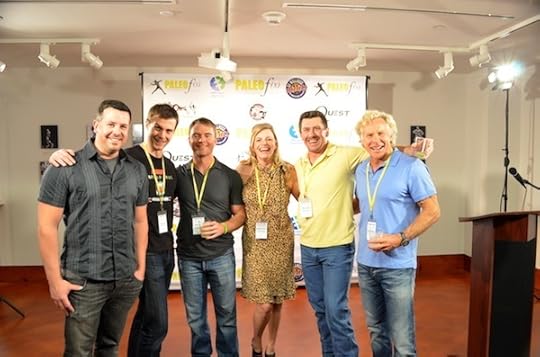

Photos from Paleo f(x) 2012
But it’s already April 10!
No worries! Paleo f(x) is offering a live streaming opportunity for those of you who can’t make it to Austin on such short notice. You can watch live in HD quality from your desktop, laptop, tablet, or smartphone. If you’ve been looking to delve deeper into the functional paleo approach to health with real world, easy-to-implement practices, then Paleo f(x) is a not-to-be-missed opportunity. Pick your panels, and opt for a live stream day pass or jump into paleo with a discounted three-day online ticket. It’s time to move past theory and into practice, and learn from the guidance of experts who have devoted their lives to evolution-based health, wellness, and fitness. Get your live streaming pass here and tune in April 11-13th for the second-annual Paleo f(x). I hope to see you there, either in person or online!
Get Your Paleo f(x) Live Streaming Ticket for April 11-13 Here>>




April 9, 2014
One True Paleo Diet Doesn’t Exist, but So What?
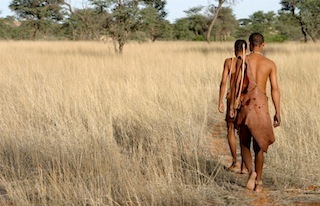 As a rule, people tend to eat whatever food they can physically access. Transcontinental shipping now allows us to access all sorts of foods – we can eat durian in California, jasmine rice in Alaska, Spam in Hawaii, and Russian caviar in Cape Town – but for most of (pre)history, humans ate only locally available foods. So it’s no surprise to hear that hunter-gatherers, past and present, ate and eat wildly varied diets depending on their environment. The East African Hadza diet is different from the Arctic Inuit diet is different from the Paraguayan Ache diet.
As a rule, people tend to eat whatever food they can physically access. Transcontinental shipping now allows us to access all sorts of foods – we can eat durian in California, jasmine rice in Alaska, Spam in Hawaii, and Russian caviar in Cape Town – but for most of (pre)history, humans ate only locally available foods. So it’s no surprise to hear that hunter-gatherers, past and present, ate and eat wildly varied diets depending on their environment. The East African Hadza diet is different from the Arctic Inuit diet is different from the Paraguayan Ache diet.
This is usually highlighted by critics as a counterpoint to the tenets of ancestral health. Because apparently we’re all convinced that a single, rigid dietary prescription is the One True Diet. That’s silly, of course.
Today, I’m going to explore the hunter-gatherer diets about which we do have data, including environment, available/utilized plant/animal species, amount of food derived from the various categories (meat, fish, plants, seeds, tubers, etc), and macronutrient ratios whenever possible. Let’s see what we can glean from this data. Are there commonalities? Common differences? What trends do we observe?
I’ve excluded pastoralists like the Masai, agrarians like the Kitavans, and any other groups eating otherwise traditional diets that are not strictly hunter-gatherers. Those are certainly healthy groups, and we can learn a lot from their diets, but they aren’t hunter-gatherers.
Due to the nature of the subject, much of the data is incomplete. Much is qualitative rather than quantitative, but I’ll provide hard numbers whenever possible, usually drawing on this PDF as a source. I’ll speak in both generalities and specifics whenever possible as I try to give an overarching impression of what actual hunter-gatherers were and are eating.
Hiwi
Environment: The neotropical savannahs of western Venezuela and eastern Colombia, which are characterized by extreme seasonal shifts that rendered the area unsuitable for most agriculture (before industrial agriculture reared its head). During the rainy season, it floods up to a meter high, turning the plains into a kind of wetland. The result is a diverse ecosystem rich in edible wildlife, including waterbirds, capybara (massive, delicious rodents that I swore as a kid would make the perfect pet), deer, armadillo, caiman, and turtles.
What they ate: The Hiwi depended primarily on hunted game, fish, and gathered roots. Deer, capybara, armadillo, anteater, peccary, various fish, lizards, and turtles were the main sources of game meat. Some honey was eaten, while fruit played a minor role.
Numbers: 75% of their intake came from animals and 25% came from plants.
Ache
Environment: The tropical forests of eastern Paraguay.
What they ate: The Ache relied primarily on hunted game, honey, palm starch, and insect larvae.
Numbers: Game meat accounted for 78% of their traditional diet, honey 8%, and palm starch, insects, palm hearts, and fruit the remaining 14%. The species which comprised 90% of their hunted food were armadillo, capuchin monkey, peccary, paca, coati, and deer.
Sami
Environment: The Sami’s ancestral lands were called the Sapmi, covering northern Norway, Sweden, Finland, and Russia’s Kola peninsula. They were both sub-arctic and arctic, with treeless tundra and coniferous forests alike. By the 17th century, they’d taken up reindeer herding to keep up with the Scandinavian governments’ demands for pelts, but prior to that they were exclusively hunter-gatherers.
What they ate: The Sami were primarily hunters and fishers, with some plant utilization. Animals included reindeer (the most important one), moose, bear, seals, walrus, salmon, and rabbits. Plants included all manner of berry: blueberry, cloudberry, lingonberry, buckthorn.
Numbers: None available.
Inuit
Environment: The Arctic, including Greenland, Alaska, and Canada. Their lands were very inhospitable to most forms of agriculture and populated by large, fatty mammals, both marine and terrestrial.
What they ate: Seals, walrus, caribou, fish, shellfish, and other marine fare made up the animal food. Plant foods included seaweed, berries, roots, and partially digested plant matter (lichens, assorted grasses) found in hunted caribou stomachs.
Numbers: By most accounts, animals (both marine and land) accounted for 96%+ of their food, with plants bringing up the rear.
!Kung
Environment: Kalahari Desert of Botswana, Namibia, and Angola, a “semi-desert” with plentiful grazing after rains. Being just semi-arid, it supports more plants and wildlife than a “true” desert (like the Sahara).
What they ate: Animal foods included antelope, giraffe, rabbit, and guinea fowl. Plant foods included mongongo nuts, baobob pods, berries, citron melons (a wild melon similar to the watermelon, but far less sweet and more fibrous), wild mangos, various roots and tubers, bitter melon (a plant with anti-diabetic properties). PDF here.
Numbers: By weight (not calories, necessarily), 31% animals, 28% mongongo nuts, 41% other plants.
Hadza
Environment: North-central Tanzania, in a section of the very same Rift Valley that hosted the earliest modern humans.
What they ate: According to an anthropologist who lived with them, a “wide variety of birds and mammals” and a “variety of berries,” plus tubers, honey, and baobob. The tubers are so high in fiber that they’re “nothing like the food we eat, even the food highest in fiber.” The meat is lean by our standards, and the Hadza extract every last available bit from the animals.
Numbers: 48% animal food, 52% plant food.
Anbarra
Environment: Tropical Arnhem Land in Northern Australia, on the coast.
What they ate: Primarily shellfish and other marine animals, with some birds and lizards. Roots, fruits, and seeds (PDF) with some honey on the side.
Numbers: 75% animal food (mostly shellfish and fish) and 25% plant food.
Onge
Environment: Located south of India, the Andaman Islands hosted (and continue to host) some of the most isolated, untouched populations of hunter gatherers in the world. Even today, the Sentinelese (one of the tribes) remain essentially disconnected from the rest of the world; all attempts to make contact have ended in bloodshed, or nearly so. The best records exist for one tribe in particular, the Onge.
What they ate: Wild boar, dugongs (relatives of the manatee, a massive marine mammal with hundreds of pounds of mostly saturated and monounsaturated body fat), turtles, fish, crabs, tubers, fruit, and honey.
Numbers: 79% animal food, 21% plant food.
Those are just the groups whose diets have been quantitatively studied. There are also hundreds of qualitative, more anecdotal reports from ethnographers who studied other hunter-gatherer groups’ dietary habits without measuring energy and micronutrients, and the general impression is consistent with the more detailed: a preference for animal foods, with the majority of groups getting more than 50% of calories from animals, fish, insects, and eggs.
What do you notice? Any trends?
Reliance on hunted animal foods is consistent and universal regardless of climate: As Cordain notes, hunted terrestrial animal food – big game, small game, medium game, birds, any land animal – is a consistent feature of hunter-gatherer subsistence. The closer you are to the equator, the more plant food you see utilized. The further you get from the equator, the less plant food and the more seafood you see. But regardless of latitude, between 25-36% of hunter-gatherer subsistence comes from hunted animal food. That appears to be the baseline, with the remainder coming from plants (if closer to the equator) or marine animals (if farther from the equator).
Plant food utilization is universal but dependent on climate: While even the arctic groups consumed plant foods, plant availability – and thus consumption – skyrocketed the closer a group lived to the equator.
No vegetarians (and certainly no vegans): Vegetarianism is a luxury of industrialization. Except for honey, animals are the most energy (and often nutrient) dense foods available. Plants alone simply didn’t cut it, and that was the reality for several million years of hominid evolution. Hunter-gatherer groups help confirm our collective omnivory. And there were certainly no vegans. Does this mean vegetarianism and veganism are unhealthy? No, that can’t be proven with historical records. It does probably suggest that vegetarianism and veganism are less than optimal.
No refined vegetable fats. The !Kung’s high consumption of nutrient-dense mongongo nuts rich in linoleic acid doesn’t resemble the Arizonan’s consumption of french fries cooked in soybean oil rich in linoleic acid. Mongongo nuts are loaded with magnesium, vitamin E (to protect the linoleic acid from oxidation), calcium, protein, copper, and even zinc; soybean oil is just refined fat without nutrients. No offense to Arizona. I just picked a random state’s name out of the hat.
No refined sugar: Honey is not a refined sweetener. It’s a dense source of sugar, yes, but honey contains phytochemicals and prebiotics that alter the metabolic ramifications of consuming it. Same goes for fruit, which also comes with fiber. And truly wild honey, the kind hunter-gatherers utilize, is unfiltered. It’s full of larvae, pollen, wings, stingers, severed bee legs, unlucky drones, and other nutritious bits that distinguish it from most store-bought honey, let alone white sugar. The Ache’s 8% honey (and larvae) diet doesn’t resemble a 2-coke-a-day habit by any stretch of the imagination.
No refined grains: This is an obvious one. Grains are rarely if ever mentioned in the literature.
Lots of whole animals: Lean muscle meat isn’t the only thing they eat off the game they kill.
Insects: Many anthropologists gloss over the importance of insect consumption among modern hunter-gatherers, and some of the dietary ratios ignore their contribution entirely, but hunter-gatherer groups definitely consumed bugs (PDF).
So, are hunter-gatherer diets so different from each other as to be useless for us, as critics claim? Is, say, a !Kung diet closer to the Standard American Diet than it is to other traditional hunter-gatherer diets just because the macronutrient ratios are somewhat similar and both have a lot of linoleic acid? Is “Hadza ate different from Inuit, therefore eat grains” a valid criticism of Primal eating?
No. The trends are obvious and, while they indicate a relatively broad range of potential macronutrient ratios, they support and inform – without proving the validity of – the central themes and strategies of a Primal Blueprint way of eating.
What do you think, folks? Does the fact that different hunter gatherer groups ate/eat different foods imply that we should therefore stop eating the way that makes us feel, look, and perform better than we ever have?
Thanks for reading.
Order The Primal Blueprint Starter Kit and Take Control of Your Health Today!




April 8, 2014
How to Conduct a Self Experiment: Resistant Starch
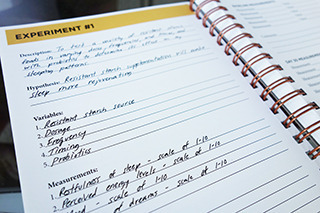 It’s been well over a year since we last did a self experimentation post, and I think it’s time for one on that current sensation: resistant starch. Whether you’re an ardent low-carber, a carnivore, or a safe starch fanatic with dried up rice stuck to your lapel, the allure of improved sleep, better glucose tolerance, lower blood sugar, and solid digestion is universal. I mean, sure, there are probably some fetishists who prefer difficult toilet experiences and creative types who thrive on the weird headspace created by sleep deprivation, but the effects often attributed to resistant starch consumption are objectively beneficial.
It’s been well over a year since we last did a self experimentation post, and I think it’s time for one on that current sensation: resistant starch. Whether you’re an ardent low-carber, a carnivore, or a safe starch fanatic with dried up rice stuck to your lapel, the allure of improved sleep, better glucose tolerance, lower blood sugar, and solid digestion is universal. I mean, sure, there are probably some fetishists who prefer difficult toilet experiences and creative types who thrive on the weird headspace created by sleep deprivation, but the effects often attributed to resistant starch consumption are objectively beneficial.
Besides, with more and more science emerging every day, it’s becoming obvious that the gut biome is the next health frontier. If we can do something that might improve our gut health, it will probably have resoundingly positive effects throughout the rest of our body – our psychological health, our immune systems, you name it. What about the uncertainty factor? I mean, what do we really know about our guts? Is it truly safe to “mess” with them?
Naysayers worry about the mystery of it all. They suggest that we wait until we truly know what’s going on in our guts, until we know all the key players, all the strains, and all the interactions between host and microbe and health outcomes.
I think that’s a mistake. If mixing a little white powder or an unripe banana into a smoothie consistently correlates with better sleep, better digestion, better blood markers, and a better subjective impression of being and existing, it’s likely going to be safe and good and overall beneficial to the rest of the health markers the gut biome interacts with and which science is still investigating. That seems like a simple, safe heuristic. Doing nothing and ignoring the gut biome is far more risky. They can “wait for science” to finish. I’ll try some out myself. Since science is an ongoing process, you’ll be waiting a long time.
Today, I’m going to give you a few guidelines for conducting a personal experiment with resistant starch. I’m not going to spell it out for you in detail, because exactly how you conduct an experiment depends on the specific effects you’ve chosen to test. By the end of the post, you’ll know how to make that choice and test it. You’ll know which variables to consider and modify and which measurements to track.
How should the uninitiated go about trying it for themselves?
Choose a research goal for your experiment, drawing on the claimed and demonstrated effects of resistant starch for guidance. Check out the Definitive Guide to Resistant Starch for ideas. Make sure the effect is plausible and shows up in the short term. Don’t try to test, for example, if resistant starch consumption will make you taller or reduce all-cause mortality. Instead, choose something like:
Sleep – quality (how rested do you feel in the morning?), quantity (how many hours?), latency (how easy do you fall asleep?), dreams (vividness, ability to remember them)
Digestion – frequency, quality, consistency of bowel movements (Bristol rating system)
Body weight/composition – body fat lost, lean mass gained
Blood sugar – postprandial, fasting
Satiety – hunger between meals, spontaneous calorie intake
Gut flora populations – Have (generally assumed to be) beneficial bacteria increased and (generally assumed to be) bad bacteria decreased?
Food sensitivities – Are food intolerances, sensitivities, or allergies diminishing or changing due to improved gut health?
Your goal could be more cutting edge, too. Think of all the effects and conditions that preliminary evidence suggests are “somehow linked” to the gut, like cognitive function, anxiety, obsessive compulsive disorder, autism, or depression. You could see if resistant starch affects those, way before science confirms any causality.
As you can see, the breadth of anecdotal, empirical, and preliminary evidence means you have dozens of potential goals.
Come up with a hypothesis:
Resistant starch supplementation will make sleep more rejuvenating.
RS supplementation will improve my constipation.
RS supplementation will increase the proportion of bifidobacteria in my gut.
RS supplementation will reduce my calorie intake by increasing satiety.
RS supplementation will reduce my gluten sensitivity.
And so on.
Assemble any tools you’ll need:
Blood glucose monitor (if monitoring your blood sugar)
Refined RS source: Bob’s Red Mill Unmodified Potato Starch (the simplest, surest source of resistant starch), plantain flour, green banana flour
The Primal Blueprint 90-Day Journal (I highly recommend you write your findings down, as it will really help you track your progress)
Probiotics: Primal Flora or other soil-based probiotics
Sleep tracker: apps, devices
Body weight/comp: calipers (for body fat), tape measure (for waist circumference), scale (for weight)
Identify any variables that may affect the results of the experiment.
How might they modify the effect of RS? Keep these in mind, pay close attention, and tweak them as needed:
RS source – Different RS sources may target different types of bacteria, thus eliciting different effects. Also, whole food sources of RS, like green bananas, contain other vitamins, minerals, and phytochemicals that may improve the experience when compared to refined sources, like raw potato starch.
Probiotics – Many people, myself included, have found that RS supplementation works better with concurrent probiotic supplementation. If you’re experiencing negative effects, adding a probiotic may ameliorate or reverse them. Soil-based probiotics (dirt, basically, which was a popular seasoning in ages past) are likely the most effective.
Dosage – This is food for your gut flora, and more food will have a greater effect. There’s also the ramp-up to consider; most proponents of RS recommend a low dosage to start with (1 teaspoon of raw potato starch). Is there an upper limit for RS consumption, even once your gut has acclimatized to the new food source?
Frequency of dosage – Does breaking up your RS intake into two doses change the effects?
Timing – Do you eat your RS with meals? The presence of food in your belly may change things. Do you take RS right before bed, in the afternoon, or in the morning?
Existing gut health – Folks with existing gut problems may experience unpleasant effects, like bloating, extreme gas, or even heart burn, especially at higher doses.
Figure out what you’re measuring:
Some measurements will be obvious and quantitative – Blood glucose readings, body weight, inches on waist/notches on belt, hours slept, calories eaten – and measuring them will be easy and intuitive.
Some measurements will be more subjective and qualitative – Restfulness of sleep, perceived energy levels, mood, vividness of dreams, stress levels, hunger – and you may want to devise a 1-10 rating system to effectively quantify them. For example, “today my feeling of restfulness upon waking is a 7 out of 10.”
Some measurements will require outside services – If you want to measure the changes in your gut flora populations, you’ll need to have your stool sequenced. American Gut is one place to have your poop analyzed.
And finally, but perhaps most importantly…
Give the experiment enough time to work.
Initially, negative effects do not necessarily imply intolerance or failure. Make sure the dosage is low (don’t start with four tablespoons of potato starch right away) and take it very slowly. Introduce probiotics. Be patient; a month should be sufficient for an honest try.
What do you think, folks? Feel like giving RS a shot? In my opinion, it’s absolutely worth trying. The implications of gut health are too great, too far-reaching to ignore.
Order The Primal Blueprint Starter Kit and Take Control of Your Health Today!




Mark Sisson's Blog
- Mark Sisson's profile
- 199 followers



